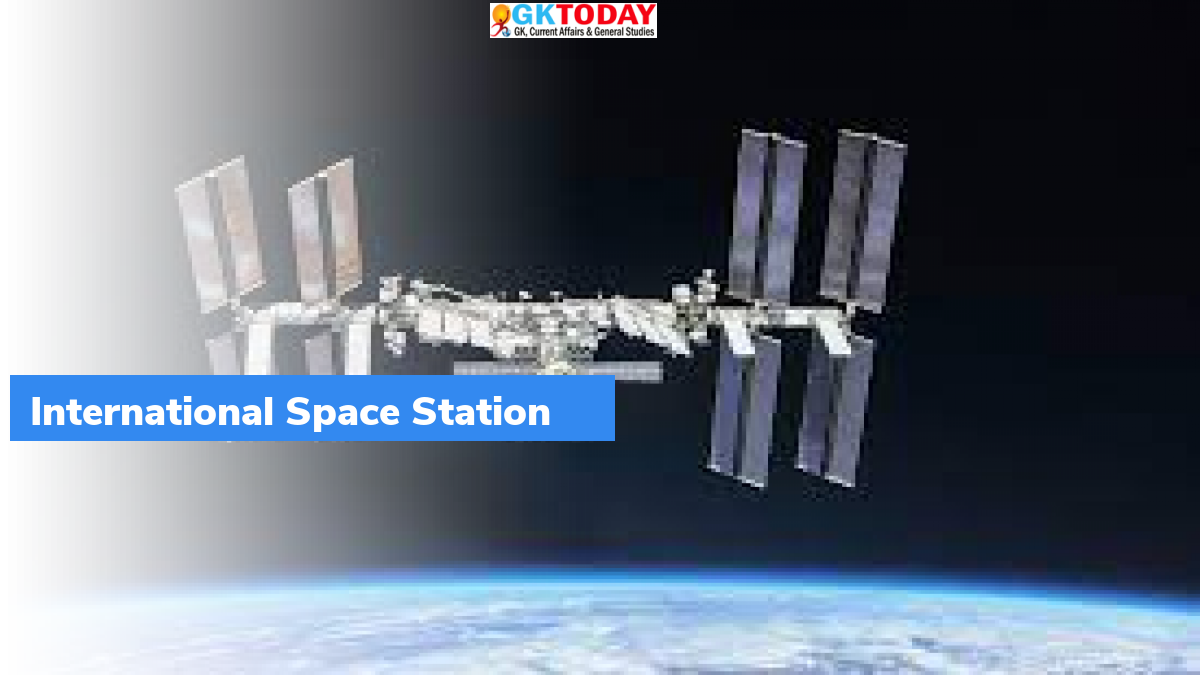NASA: International Space Station Transition Plan
Recently, NASA announced that, the International Space Station (ISS) will cease operations in 2031.
Highlights
- In 2031, the spacecraft will fall out of orbit and into the waters of South Pacific Ocean.
- NASA published the transition plan for the ISS. It explained how the operations of ISS will eventually be transitioned to commercial low-Earth orbit destinations.
- The ISS is entering its third and most productive decade as a ground-breaking scientific platform in microgravity.
Background
The International Space Station (ISS) has been orbiting Earth at a speed of around 8 km/second, for more than two decades. International crew of astronauts and cosmonauts onboard have been conducting ground-breaking scientific investigations, that have opened doors for deep space exploration.
When was the spacecraft launched?
ISS was the brainchild of former US President Ronald Reagan. He proposed to build a permanently inhabited spacecraft in 1984, in association with a few other countries. First part of the space station, a control module, was launched into space in 1998, on board a Russian rocket. Following this, crew onboard the US’ Endeavour space shuttle attached the control module with another part called ‘Unity node’. Later, the space station was built in pieces until it was ready to carry a crew onboard. The first crew arrived to ISS on November 2, 2000. Since then, it has carried over 200 astronauts and cosmonauts from 19 different countries.
Weight of the space station
As per NASA, space station weighs about a million pounds on earth. It is of same size as an American football field. The space craft can support a crew of six people, along with visitors. It comprises of laboratory modules from United States, Japan, Russia, and Europe.
Extended Tenure
The ISS was meant to be operated for about 15 years. But in 2014, NASA extended its tenure in Space by another 10 years.
Retirement of ISS
According to NASA, re-entry of ISS into Earth’s atmosphere will take place in January 2031. Mission control will first lower its altitude and it will start its descent into ‘South Pacific Oceanic Uninhabited Area (SPOUA)’, in an area called Point Nemo. Operators of ISS will perform ISS re-entry burn and provide the final push to lower ISS.
Replacement for ISS
ISS will be replaced by one or more commercially-owned and commercially-operated space platforms.
Landmark firsts by the spacecraft
- In 2018, Cold Atom Lab of NASA became the first facility to produce fifth state of matter in space, called a Bose-Einstein condensate.
- In 2016, a NASA astronaut sequenced DNA in space for the first time.
- Advanced water filtration and purification systems besides successful attempts at crop production onboard the ISS have offered useful lessons for people worldwide who lack access to these crucial resources.
Point Nemo
Point Nemo is a sort of space cemetery, where decommissioned space debris are often brought to rest. It is located at a distance of 2,700 km from any land. The place has been named after a character in Jules Verne’s novel “Twenty Thousand Leagues Under the Sea.
Month: Current Affairs - February, 2022
Category: International / World Current Affairs • Science & Technology Current Affairs


